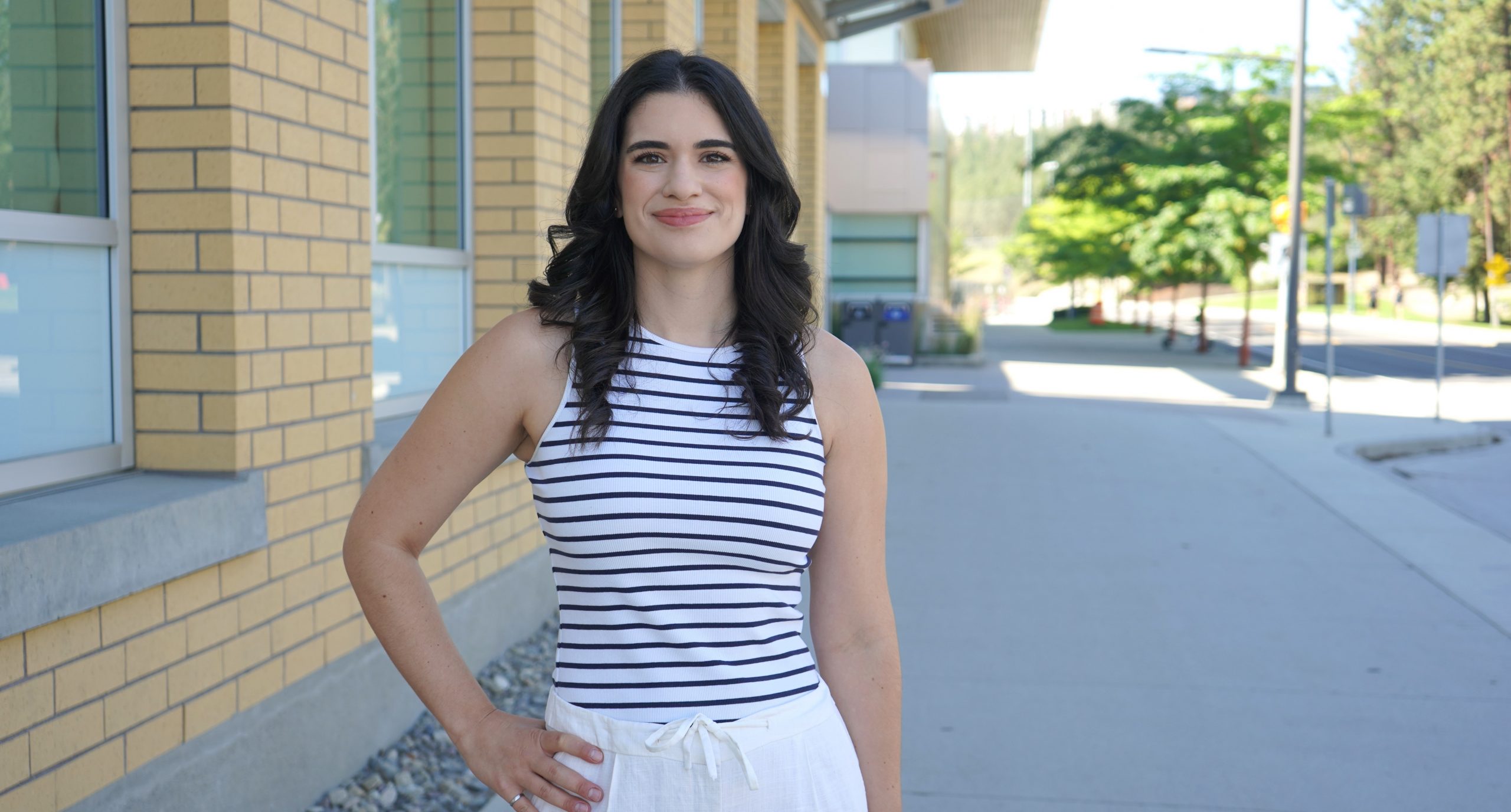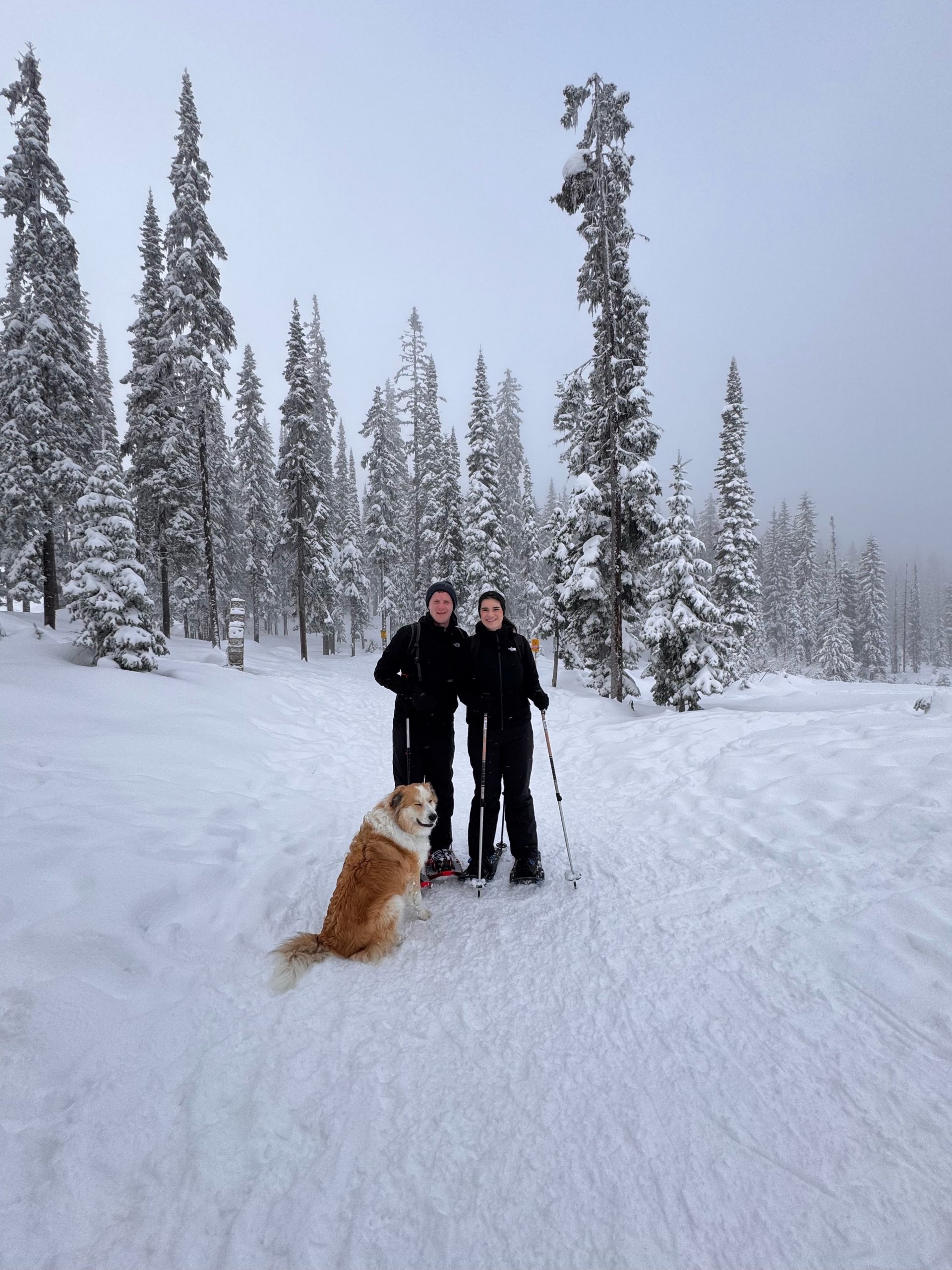
Dr. Jennifer Frattolin outside the EME building.
Dr. Jennifer Frattolin is an assistant professor in mechanical engineering specializing in biomedical engineering. In recognition of International Women in Engineering Day, she is one of several women in engineering being spotlighted from the School of Engineering.
What sparked your interest in engineering? Can you share a moment when you knew this was the path for you?
I was always fascinated by the human body and how it works; when I was younger, I thought this meant I was supposed to become a doctor. Instead, when I was exposed to the subject of biomedical engineering in my high school biology class, I realized engineering was the career path for me. In my grade 11 biology class, we did a special topic on artificial heart design – now, much of my research over the past 12 years has been focused on medical devices and the circulatory system.
What drew you to UBC Okanagan, and what has made this campus feel like home for research, teaching and life?
Having worked and lived in large urban centres for the past 11 years, including Montreal and London, UK, I wanted my next academic position to be at a smaller institution. I have always wanted to be part of a university where I could have a significant impact, both with respect to my research and teaching. UBC Okanagan is the ideal university to achieve these goals, as a research-intensive institution with a close-knit academic community.
I have always wanted to be part of a university where I could have a significant impact, both with respect to my research and teaching. UBC Okanagan is the ideal university to achieve these goals, as a research-intensive institution with a close-knit academic community.
Tell us about your research.
My research is focused on building microfluidic models of the immune system to study its role in health and disease. Microfluidic chips are miniaturized devices with a network of micro-channels that can move small quantities of fluid and cells. I design custom chips that uniquely replicate the tissue micro-environment. Currently, I am working on building a chip model of a coronary artery to study how the immune system plays a role in cardiovascular disease.
What does a typical day in your research world look like? How do you conduct your research?
My research is largely experimental. I love working in the lab and running experiments, so I am always looking for time in my schedule to do this work. My dedicated research time is typically split between writing research papers and grants and working in my lab.

T and B cells in a hydrogel.
Why does your research matter? What kinds of change or impact do you hope it will bring to the world?
The immune system is the body’s defense against disease and infection, and there is still so much we do not understand about it. Next generation immunotherapeutics, drugs that tune the immune system to fight diseases such as cancer, require us to have an in-depth understanding of how the immune system works in different disease contexts. My research is focused on improving our understanding of the immune system’s complexity and identifying exploitable targets for drug development, a critical part of developing novel therapeutics to treat diseases such as cancer and cardiovascular disease.
What do you love most about teaching and how has being in the classroom shaped your own understanding of engineering?
I am fortunate to teach subjects that I am truly passionate about such as biomedical engineering and material science. It is incredibly rewarding to see students make complex connections between engineering and biology to investigate real-world problems, such as designing tissue engineered scaffolds. Being in the classroom has consistently challenged me to refine complex engineering concepts into their most essential and understandable forms. More importantly, it has encouraged me to view the field of engineering through the lens of the student, who often ask questions that challenge assumptions in my field.
How do your roles as a researcher and an educator intersect in surprising or rewarding ways?
One of the courses I teach, Tissue Engineering, is closely related to my own research. I weave into the lectures cutting-edge, real-world examples from my own research, which I believe enriches the overall learning experience for the students. One of the most rewarding aspects of this is when students approach me after class to learn more about my research and seek opportunities in my lab.
One of the most rewarding aspects of this is when students approach me after class to learn more about my research and seek opportunities in my lab.
As we approach International Women in Engineering Day on June 23, 2025, we asked Jennifer to reflect on her experiences as a woman in engineering.
As a woman in engineering, how has your perspective shaped your experience or purpose in the field, and what shifts are you seeing today?
I think it is incredibly important to have female faculty role models for both undergraduate and graduate students. As a mechanical engineering student, I had very few female role models in the field and that challenged my perception of belonging. Now as an assistant professor in mechanical engineering, I strive to be accessible to our female engineering students and support them in their journey to become engineers- so they can continue to break down barriers in STEM and achieve success.
Are there women in engineering whose work or journey has inspired your own?
Dr. Meilan Liu was a professor at Lakehead University where I pursued my Bachelors of Engineering. She was an inspiration to me – she was the only female professor in mechanical engineering, and she made me realize that I too could become a professor one day. Knowing I wanted to pursue a similar path into academia, I looked up to her and sought her mentorship, particularly in my final year of my undergraduate studies while I was navigating graduate school applications and my Capstone project, where she served as my advisor.

Dr. Frattolin and her husband at Big White.
What advice would you share with the next generation of women and underrepresented voices entering engineering?
Be authentic to yourself and take up space. Your voice matters. Anyone can become an engineer if they put in the hard work and have the right attitude.
Anyone can become an engineer if they put in the hard work and have the right attitude.
What’s lighting you up this summer-whether it’s a new idea, exciting project, or something outside of work?
I am new to the Kelowna area having moved to British Columbia in July of last year. I am excited to explore the surrounding Okanagan this summer. My husband and I love to hike, so I am looking forward to experiencing the beautiful trails around Kelowna.